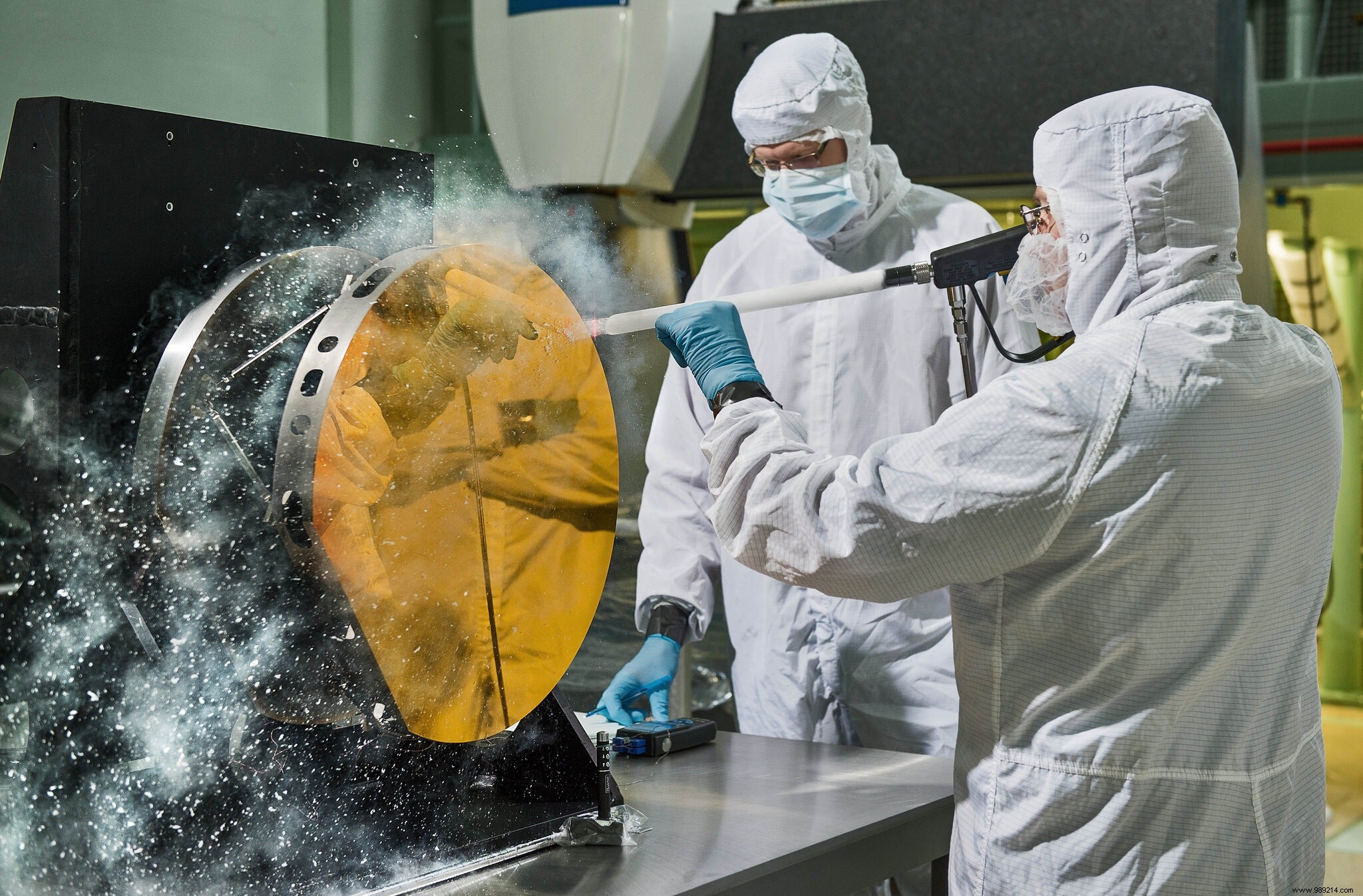After successfully completing its final tests, the James Webb Telescope is being prepared for shipment to its launch site in Guyana, where it will be launched into space aboard an Arianne 5 rocket.
In the papers since the 90s, the James Webb Telescope was expected to cost less than a billion dollars and be ready by 2010. Thirty years and almost ten billion dollars spent later, the observatory is finally ready for launch, except for a few details. We take stock of the next deadlines.
A few days ago, engineering teams wrapped up the "long-duration testing" program at Northrop Grumman's facilities to ensure the most reliable telescope complex in the world will be able to undergo the launch phase without any problem and that it will work as intended when released into space . These operations completed, the observatory is now preparing for its trip to Guyana during which it will cross the Panama Canal. These expedition preparations will be completed in September.
In the meantime, teams from the Mission Operations Center (MOC) at the Space Telescope Science Institute (Baltimore, USA) continue to verify the complex communications network that the James Webb Telescope will use to transmit its data to Earth. Mission leaders will also rely on this network to send their commands to the instruments.
Once the James Webb Telescope arrives in French Guiana, teams will need to ensure that the observatory has not been damaged during shipment . If all goes well, they'll then load the propellant tanks with hydrazine fuel and a nitrogen tetroxide oxidizer that the observatory will need to power its thrusters in order to sustain itself in orbit. /P> 
Next, the engineering teams will couple the observatory to its launcher, an Ariane 5 rocket provided by the ESA (European Space Agency). The launch is still officially scheduled for October 31 , but there is a good chance that it will be pushed back to mid-November.
About 26 minutes after liftoff, the observatory will separate from the rocket and its solar array will automatically deploy. It should then return to orbit about a month later. During this time, all the instruments of the observatory, starting with its enormous sun visor, will be deployed one by one from the control center .
Note that the telescope will not be in orbit around the Earth, as Hubble can be, but around the Sun, 1.5 million kilometers from Earth on the second Lagrange point (L2). The uniqueness of this orbit is that it will allow the telescope to remain aligned with our planet, while allowing the sunshade to shield it from the light and heat of our star, as well as the Earth-Moon system. To probe the primitive universe, the James Webb Telescope will indeed need to be cool!
Once the observatory has cooled down and stabilized at its optimum operating temperature (less than 45°C above absolute zero), it will undergo a warm-up period. in service which could last up to six months during which all its instruments and optics will be calibrated. Scientific operations should then be able to begin with a single objective:to revolutionize our approach to the universe.